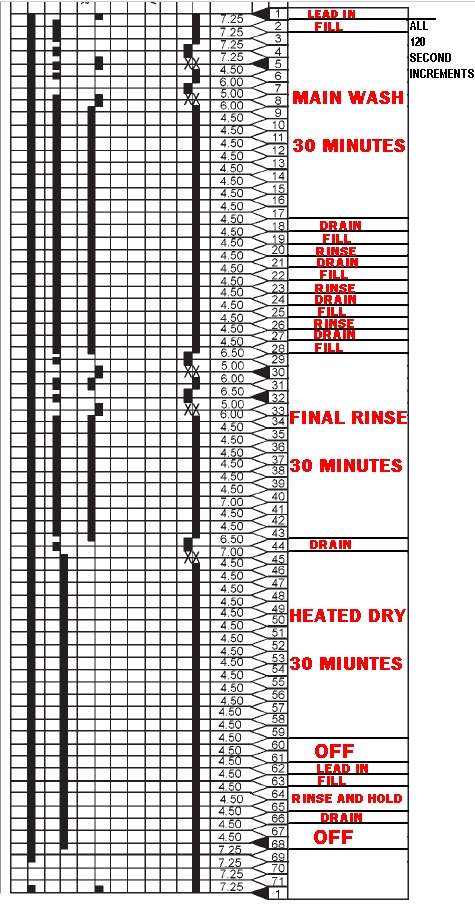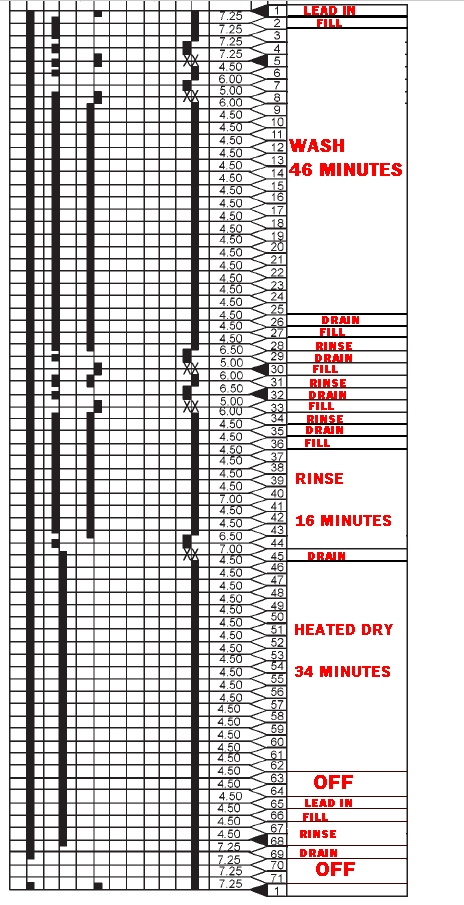Another thread got me thinking. How necessary are pre-wash cycles with modern dish-washing detergents and longer main wash times? How practical would it be to eliminate the prewash sequence altogether?
I've noticed modern dishwashers in general have fewer pre-wash phases and more post main wash rinses compared to machines 30 years prior.
I'm thinking of a cycle sequence like this- either on a modern machine or on a Whirlpool Power Clean Module, Maytag Reverse Rack or a Hobart Kitchen-Aid.

Second Variant:

Main wash, final rinse and heated dry are all heated.
I've noticed modern dishwashers in general have fewer pre-wash phases and more post main wash rinses compared to machines 30 years prior.
I'm thinking of a cycle sequence like this- either on a modern machine or on a Whirlpool Power Clean Module, Maytag Reverse Rack or a Hobart Kitchen-Aid.

Second Variant:

Main wash, final rinse and heated dry are all heated.



